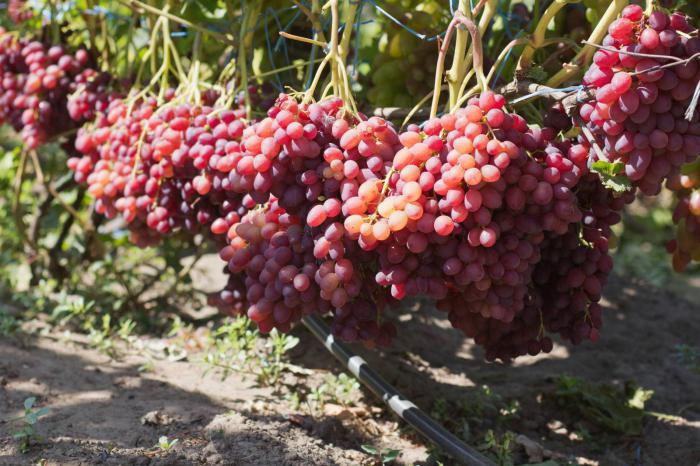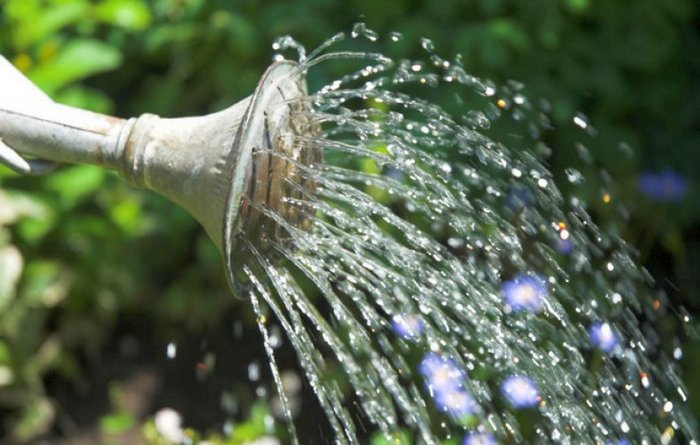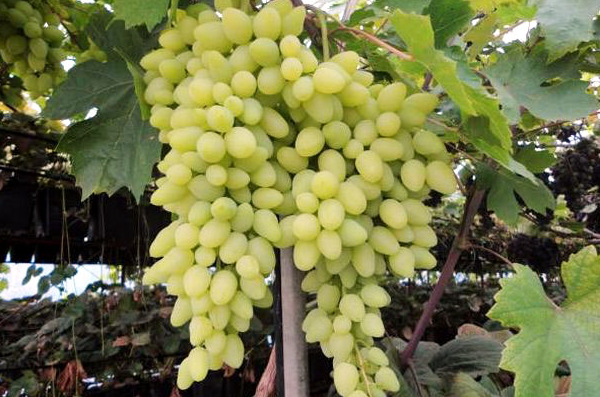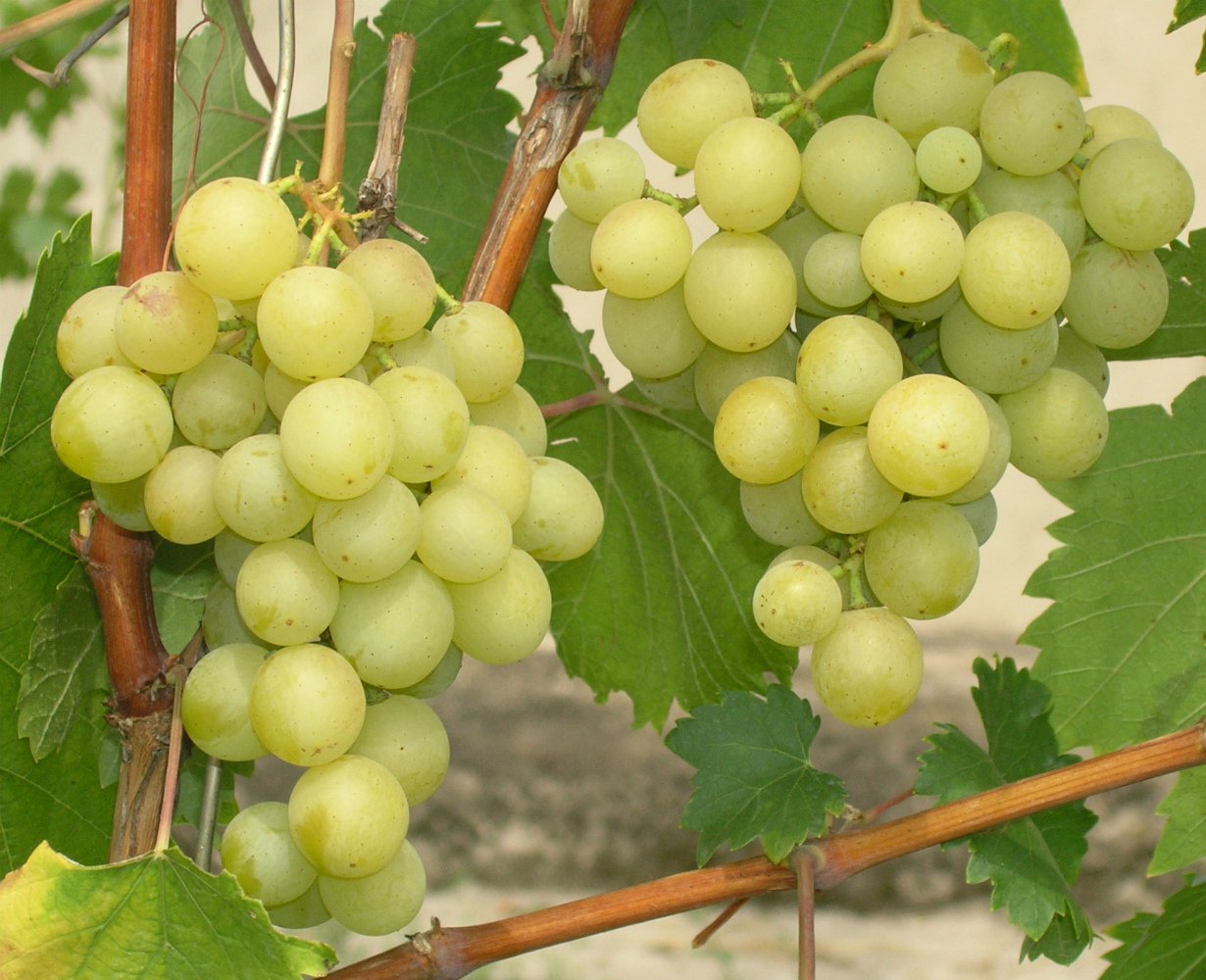Content:
From the great variety of different grape varieties, it is sometimes difficult for novice summer residents to make the right choice. But you really want to grow a frost-resistant, self-pollinated, high-yielding variety on your site. Veles kishmish grapes are quite suitable for these parameters. Popularly known as raisins with seedless berries, suitable for consumption in fresh, dried form (raisins).
Veles grape is a seedless, early variety. The first harvest can be satisfied within 95 days from the moment the buds open. Veles is a hybrid bred by the Ukrainian agronomist Zagorulko in 2009. In 2010, during the wine-growing tasting, the variety was awarded the “Golden Bunch of Grapes” award.
Description, characteristics of the variety
Veles is a seedless class 3 hybrid. Distinctive features - high growth rate of bushes, ripening of shoots when favorable conditions are created.
Velez grapes: basic descriptions
- inflorescences - voluminous with an arrangement of 2-4 pcs. on every shoot;
- flowers - small, bisexual, yellow-green;
- brushes - large (width 20 cm, length 30 cm);
- clusters - conical, branched, loose, voluminous;
- ripe bunch weight - 600-2000 g;
- the weight of one berry is 5-6 g;
- the pulp is translucent, pink, jelly with a nutmeg tint.
In the north, in the Moscow region, many shoots will only weigh down and shade the bushes, prevent berries from ripening, and provoke the development of diseases.
Agrotechnical features of growing
The cultivation of the Veles variety is carried out in 2 ways:
- ready-made seedlings;
- cuttings.
The first fruits can be tasted as early as the 2nd year after planting young plants.
Experts advise to touch them less with your hands when cutting bunches. The berries of the Veles grapes are covered with a waxy coating, which just protects them from damage.
Basic requirements for growing this grape variety:
- The soil. The variety is not picky about the quality of the soil and will grow well on loams and sandstones. If the soil is too clayey, then it is recommended to lay drainage (expanded clay, broken brick) on the bottom of the holes. Regardless of the soil, equip the planting pits with compost, peat, humus. The best places for planting grapes are slopes, where the variety will receive plenty of light, and the berries will begin to ripen faster and gain sugar content.
- Landing. It is necessary to plant grape seedlings at a distance of 1.5-1.8 m in the direction from north to south. The height of the landing holes is 35-40 cm lower, taking into account the level of the upper layer of the earth.
- Watering. Plants do not need frequent watering. However, it should be shed well during budding of the vine, at the beginning of flowering and fruit formation. Also, after each watering, add mulch from humus, moss, sawdust, peat to a thickness of 2-3 cm. It is not necessary to put too large a layer, otherwise the roots will prevent the access of air.
For the Veles variety, it is preferable to use drip irrigation with installation along the rows. This will reduce water consumption, and summer residents will not have to pour a bucket of water under each bush. - Tying up shoots. It is important to carry out the procedure during the growing season.Tie the shoots to the trellises, laying them in several rows so that shoots and leaves do not become crowded, and the seedlings receive sufficient sunlight. This will facilitate the work of the grower, because it will be much easier to pinch and remove shoots, apply fertilizer.
- Pruning. An obligatory step in caring for the Veles variety. Contributes to the formation of the future harvest, facilitates wintering. It is recommended to prune each shoot at 6-8 buds in late October - early November. It is important to remove barren buds growing on wood and not to overload the bushes. Why break off partially fruiting shoots.
- Reproduction. You can propagate the Veles variety by seedlings or cuttings. The former begin to bear fruit earlier. Cuttings lead to later harvests, although cuttings root well.
- Disease prevention. Variety Veles is unstable against fungal diseases, mildew or mildew infection, causing weakness of the affected bushes up to a sharp decline in yield. To prevent damage to the bushes means to carry out prophylaxis in the autumn by treating with Bordeaux mixture and repeating the procedure in the spring until the buds bloom. You can use the drug Ridomil in case of the appearance of ash on the berries (shoots).
The process of growing Veles grapes consists of the following stages:
- shortening the root system of seedlings up to 12 cm;
- leaving 2-3 shoots with 3 eyes on each with growth in opposite directions;
- placing planting material in warm water for 1 day;
- keeping the roots of seedlings in a slurry of manure or clay for 3-4 hours before planting in the holes;
- digging holes to a depth of 45-70 cm;
- the introduction of humus (3-5 kg) for each bush 3-5 kg in low-fertile soils;
- placing seedlings vertically in the holes;
- sprinkling with earth by 1/3 part;
- watering a bucket under each bush.
The best time to plant a vineyard is early spring when the soil warms up to 8 degrees.
Advantages and disadvantages
The Veles hybrid has earned popularity among the people, since it has many advantages in contrast to other grape varieties:
- the presence of bisexual flowers that do not require additional pollination;
- large weight of ripe bunches of berries;
- resistance to frost up to −21 degrees;
- harvesting twice a year, at the end of August and October (thanks to the formation of stepchildren on the bushes);
- high-speed growth of shoots;
- excellent taste of ripe berries;
- early maturity;
- good transportability.
Among the disadvantages it is worth noting:
- cracking of berries with frequent watering;
- defeat by wasps, which can be difficult to get rid of;
- instability to fungal diseases.
Veles is a thermophilic variety, therefore it gives good yields under favorable climatic conditions. Although one cannot consider him capricious. Even novice gardeners can easily grow vines and collect weighty types of fragrant, tasty bunches, given the planting rules and care features.














